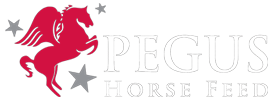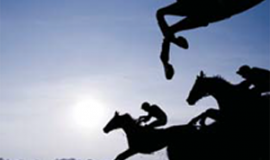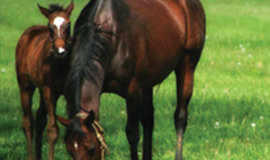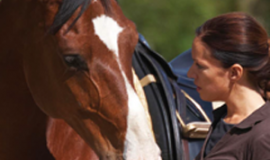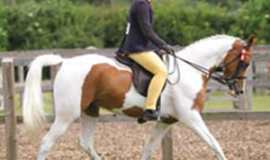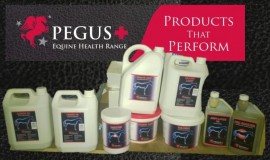Horses on summer pasture
Summer is grazing time and we have to monitor closely how well our horses are doing and how well the quality and quantity of their pasture suit them. The ideal is that the quality of pasture should enable it to cover horses’ nutritional needs. Poor pasture will lead to the development of thin horses, while good pasture will eventually result in fat horses. The latter is the most common problem for many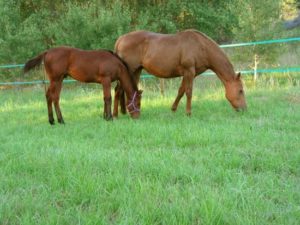
When horses are on pasture day and night, they can graze efficiently for anything between 15-17 hours a day. This means that horses can graze for almost the whole day, interrupted by shorter or longer breaks. In warm periods, the longer of these pauses are taken in the middle of the day and most effective grazing takes place during morning, evening and night hours.
How much will a horse eat when grazing?
To calculate how much horses eat at pasture, we must estimate the amount of dry matter they eat. Pasture grass contains about 80% water and 20% dry matter. On medium quality pastures, we can expect a horse to eat an amount of grass equivalent to 2 kg dry matter per 100 kg body weight (2% of body weight). This means that a horse of 500 kg body weight will eat about 10 kg dry matter daily, corresponding to 50-60 kg of grass. On good quality pasture a horse can eat more than this, often up to 3 kg dry matter per 100 kg body weight (3% of body weight). On low quality pastures with little grass, intake will be considerably less.
How much of nutrient requirement is met when horses graze?
If we estimate how much your horse eats per day on pasture with a grass that has a reliable, regular nutritional content, we can calculate how much of nutritional need is covered while the horse is grazing. With the horse on good grazing and eating 3 kg dry matter per 100 kg body weight, this intake will represent the equivalent of 2.5-3 times the horse’s maintenance energy requirement and 3-4 times its maintenance requirement for protein. This means that a horse in such good pasture can also gain a relatively large amount of weight and even become very fat during the summer months. For a horse of 500 kg, this could represent a weight gain of about 35 kg per month.
A similar example, with a horse on medium quality pasture and eating a grass amount equivalent to 2 kg dry matter per 100 kg body weight, shows that the horse will have a grass intake equivalent to 1.5 to 2 times its maintenance energy needs and around 4 – 2.5 times its maintenance requirement for protein. For a horse of 500 kg, this could represent a weight gain of about 12 to 18 kg per month.
If pasture is of moderate quality and a horse only manages to eat a grass equivalent to 1.5 kg dry matter per 100 kg body weight, that horse will receive from 1 to 1.3 times its maintenance energy needs and 2.5-3 times its maintenance protein requirement. Such a horse will not gain much weight over the summer.
These examples are based on the assumption that the grass in the pasture is of good quality. If pasture grass has become old and overgrown, nutritional values will be reduced and the horses will eat less. In dry periods, pasture quality can fall very quickly and we must watch out for the effects of this on the condition of our horses. It is always best to have several pastures available in order to avoid excessive grazing on any one area. If we can alternate between different pastures we can also remove old grass and enable fresh grass to grow.
Is your pasture quality right for your horse?
As we see from the examples above, high quality pasture can actually cause horses to grow obese. If no alternative grazing is available, you will need to limit your horse’s grazing time. Adult horses that graze all summer with no other use made of them may well do better when put to graze on less intensive pasture set in more open, forest, woods or mountain areas. Mares with foals must always have good pasture as they need to produce milk. Their foals also need such nutritious pasture grass.
Pegus PC-Horse has a dedicated module for pasture nutrition. After selecting the horse and then a pasture grass as feed you will be given the option to click on: Horse on pasture. Here you enter how many hours the horse will graze every day, as well as the quality and quantity of the available pasture grass. From this data the program calculates how much you can assume that the horse will eat and how well its nutritional needs will be met.
What does this mean in practice?
Daily intake of roughage varies based on feed quality, production classes, individual appetite and each individual’s place in the herd hierarchy. This means that we must observe horses in a herd closely and make corrections to the feed offered each individual at night-time or early morning to avoid some individuals growing too fat or too thin.
Contact Pegus Horse Feed www.pegus.ie info@pegus.ie Tel 00447710883088
